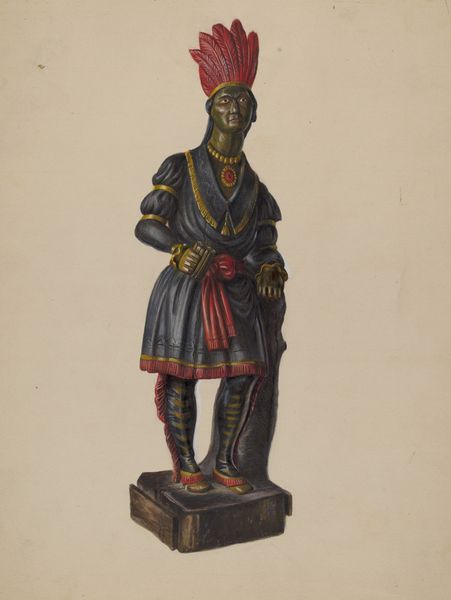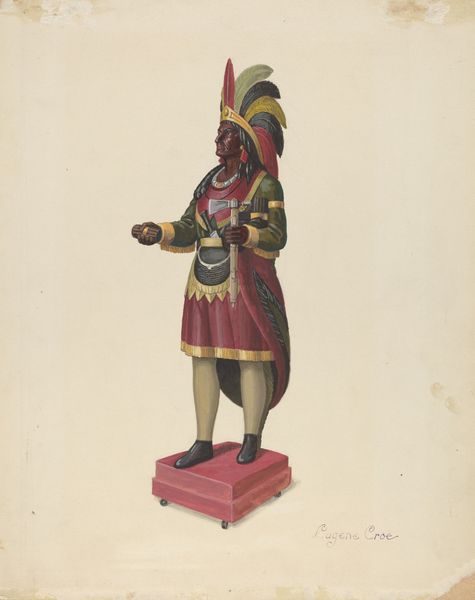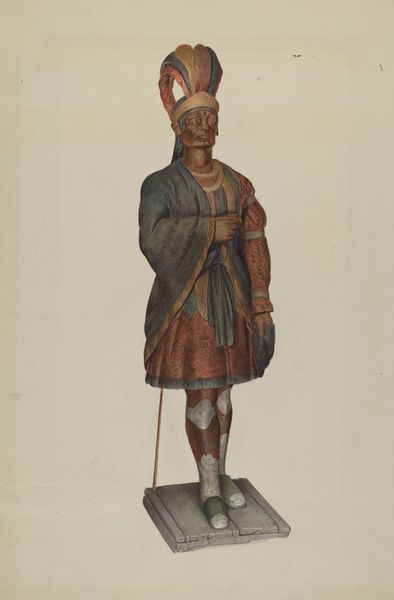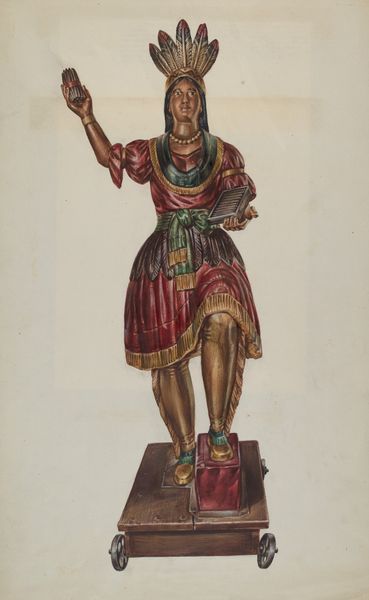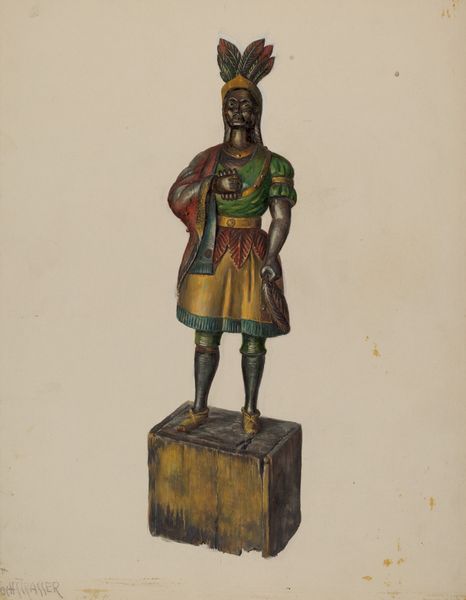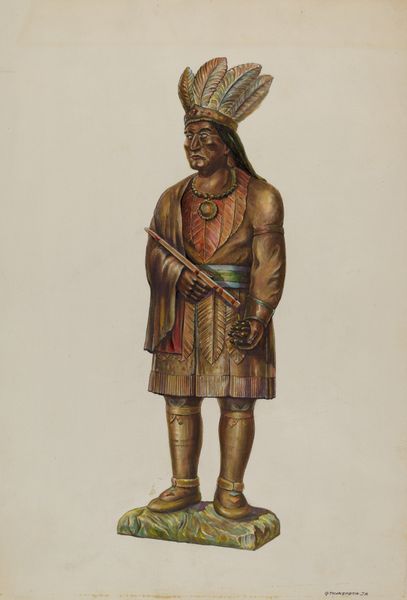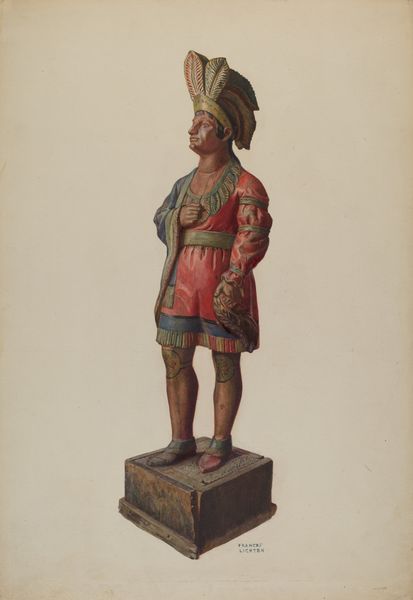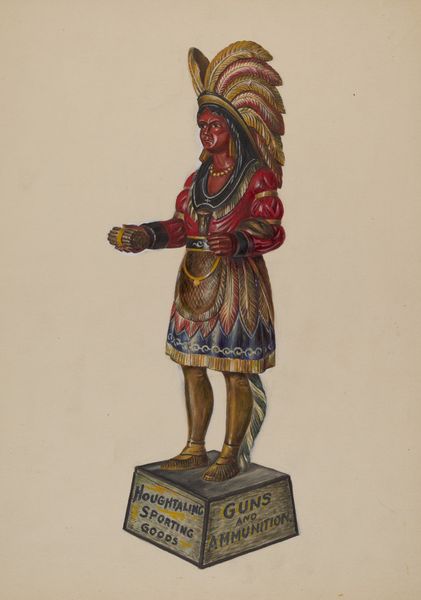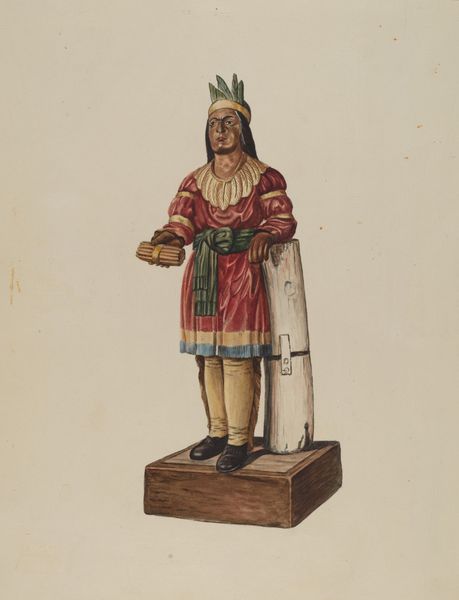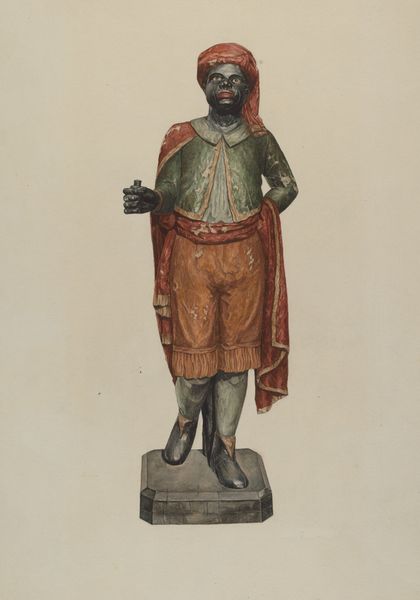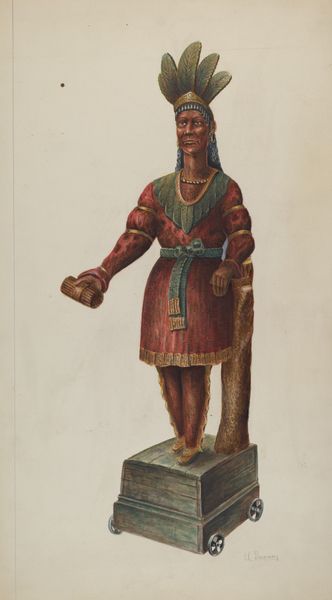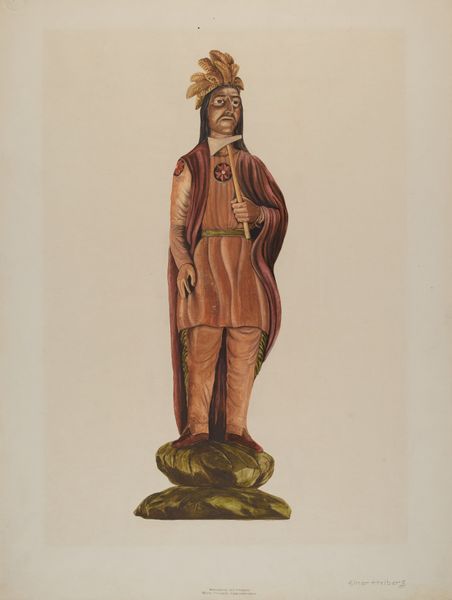
drawing, coloured-pencil, paper, pencil
#
drawing
#
coloured-pencil
#
charcoal drawing
#
paper
#
oil painting
#
coloured pencil
#
pencil
#
portrait drawing
#
watercolor
Dimensions: overall: 35 x 24.9 cm (13 3/4 x 9 13/16 in.)
Copyright: National Gallery of Art: CC0 1.0
Editor: This is Walter Hochstrasser's "Cigar Store Indian," made around 1936 with colored pencils. The figure is rigidly upright. The artist uses color to set it off from the background, though its own color scheme feels almost drained. What do you make of the form and presentation here? Curator: Notice first the very calculated placement of the figure within the frame; its stark, upright symmetry divides the visual field into distinct left and right quadrants. We are forced to acknowledge that division, just as we are forced to confront the inherent artifice. How do these colors contribute to this dynamic? Editor: They make it hard to focus. The reds and golds don't feel quite celebratory, or lifelike. Curator: Precisely! The dullness diminishes any realistic dimension. Color acts here to reinforce the fundamental artificiality of the subject—a mass-produced simulacrum, itself already one step removed from lived experience. Consider the figure's rigid stance—its utter lack of dynamism. What purpose might this calculated immobility serve? Editor: It suggests… control? Maybe even the idea of something frozen in time? Curator: Perhaps, but it could also evoke ideas about colonial domination. I am not necessarily arguing in favour of these meanings as facts. The forms communicate that possibility. Now, look at the lines comprising the headdress or clothing fringe; how are we to understand the way forms reinforce or undermine conventional portraiture and established figurative codes? Editor: It's less about representing someone real than about projecting an idea of what they might represent. I hadn't considered all those layers of interpretation! Curator: Art often withholds as much as it reveals, leading us to consider these complex visual tensions inherent to representation.
Comments
No comments
Be the first to comment and join the conversation on the ultimate creative platform.
